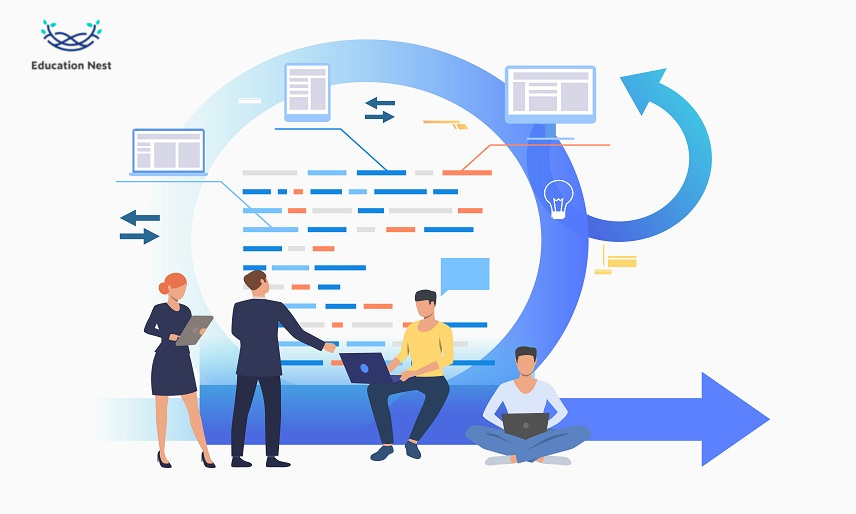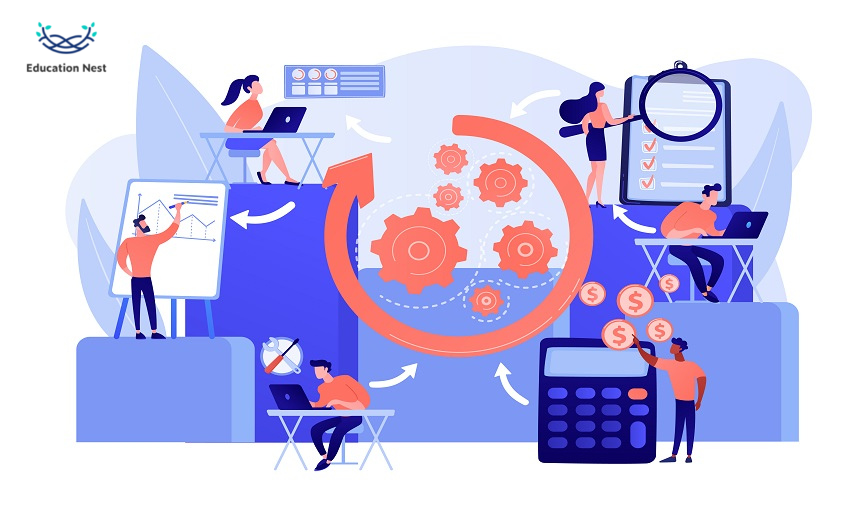
As a component of the transformation process in operations management, inputs are changed into outputs. This can be done through either production or service steps. The goal of the change is to make the data worth more than the sum of its parts. To add value, you must change the client’s input into something they find more valuable.
The many steps in the transformation process can be thought of as a value-added chain, with each link making the final product better. The most important part of the transformation process is picking the right inputs. If the wrong information is used, the output might differ from what was hoped for. If you use the wrong process for production or service, you might end up with less-than-ideal results. To improve operations and gain a competitive edge, you need a good understanding of the transformation process. This blog will talk about the transformation process meaning, types, what transformation process is in business, etc.
What is Operations Management?
Businesses must use effective operations management strategies to give customers high-quality goods and services. Think about what you ate this morning for breakfast. Unless you grew them on a farm, they went from the field to your dinner plate with the help of many people and institutions.
You use a lot of different physical products and online services every day. People in factories crafted most of the things in the world, and people in companies did most of the services. Most of us use products and services without giving much thought to how they are put together, just like some people say that fish don’t notice the water around them. In operations, people study the things they buy and use every day.
An Overview of the Transformation Process in Operations Management
In operations management, the term “transformation process” refers to the steps taken to change one set of inputs into another set of outputs. A change could take place in a physical or chemical process. In business, the phrase is often linked to making something.
In operations management, the raw materials are usually the input, and the final product is the output of the process. The goal of the change is to make the information better and make things that people want to buy.
The following steps make up the operations management transformation process:
- The inputs come from the suppliers.
- Warehouses are where things are kept until they are needed.
- During the planning stage, the order in which materials are processed is set.
- How the materials get to the workshop.
- Workers turn raw materials into things that can be sold.
- Tests and inspections make sure that the products are of high quality.
- Buyers get their goods once they are done.
You Must Like: The Job of a Product Manager: Overwhelming or Stressful?
How do transformation processes affect operations management?
Business operations are all about “getting things done.” For a company to do well, it takes more than just “getting things done.” So, it has to do what needs to be done. The problem is that it sometimes needs to be clarified what’s right; even if it were, the rules tend to change over time.
Customers’ needs and wants change over time, as do those of competition (in the form of lower prices and better quality), geography (not all societies wish for the same goods in the same way), environmental disturbances, and other factors. You may need to make some changes to your business, either to meet the requirements of a new law or to make it more “green” and sustainable in general.
So, being able to change is essential if you want to keep your business going in the long run. It would help if you learned to adapt to your surroundings, no matter how difficult. With the help of transformation procedures, operations can be changed to meet new needs.

Types of Transformation Process in Operations Management
There are mainly three types of transformation processes in operations management. They are-
- Information Processing
- Material Processing
- Customer Processing
Information Processing
Operations management is planning, coordinating, and controlling the steps that turn raw materials into finished goods.
Most transformations happen when information is processed, the matter is changed, or the chemical makeup of something is changed.
Manufacturing, putting things together, and putting them in boxes are all physical changes that turn raw materials into consumer goods. Chemical transformation can change how things are made chemically, leading to new products or better qualities. Information processing is a must if you want to make decisions, keep track of things, and be in charge.
Material Processing
Material processing is one of the ways that operations management often changes things. This change focuses on turning raw materials into something that can be made. The result could be a physical item or a service.
Raw materials must go through many steps to become finished goods, but the basic idea is the same. Most of the time, this is done by adding value at each step of the production process. Raw wood can be made into furniture, and iron ore can be turned into steel.
Material processing is essential to operations management because it leads to the goods that customers buy. Material processing must be carefully planned to ensure that the finished goods are up to par.
Customer Processing
Operations managers use transformation procedures to change what goes into what comes out. The type of transformation used will depend on how the operation is done.
Changes in the way things are made would be helpful. In a company that makes things, for example, the input might be raw materials, and the output might be a finished product. A service business starts with a customer’s needs and ends with a happy customer. The kind of change used is called “customer processing.”
The essential stages of transformation are making, putting together, and getting through customs. The process of turning raw materials into a finished product is called “production.” Fabrication is putting together a product from raw materials using different machines.
During assembly, various parts are combined to form the whole. “Customer processing” is getting information from a customer and creating something that meets that customer’s needs or expectations.
The specifics of the operation will determine which transformation method is used. Manufacturing and customer processing could happen simultaneously in a company that makes things and provides services. You can use more than one transformation technique in a single application.
Conclusion
The transformation process changes the inputs in operations management into the outputs. This method is vital to a company’s success because it creates goods and services that people want. If an organisation understands the different stages of the transformation process, it can better optimise its operations and make sure it meets customer expectations.
FAQs about Transformation Process in Operations Management
What is the Transformation Process in Business?
A transformation process is an action or set of activities that take one or more inputs, change them in some way, and then turn those changes into outputs for consumers.
What happens during the process of transformation?
Transformation processes include:
- Changes in the way materials or customers look or behave.
- Changes in where materials, information, or customers are located
- Changes in who owns something or who has access to it
What are the essential resources for a process of transformation?
The staff, facilities, materials, information, and customers.

